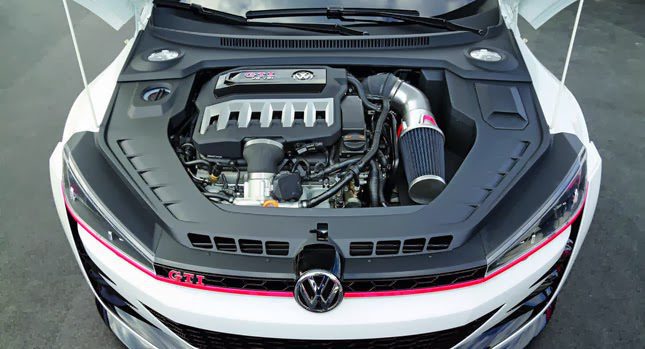Just how to Pick the Right Opel Corsa Engine for Your Auto
Just how to Pick the Right Opel Corsa Engine for Your Auto
Blog Article
Discovering the Inner Functions of a Compact Car's Engine System
As drivers, we often consider given the intricate procedures that happen within the confines of our automobile's engine system. The small yet intricate equipment that moves us onward is a wonder of engineering accuracy and coordination. From the regulated explosions in the burning chamber to the precise timing of gas injection, every part plays a vital role in the smooth procedure of the engine. In this exploration of a portable car's engine system, we will certainly decipher the internal workings of this mechanical harmony, clarifying the enigmas that drive us forward on our day-to-day journeys.
Burning Refine Introduction
The combustion process in a small car's engine system is a critical system that successfully transforms fuel right into energy to power the car. This procedure occurs within the combustion chamber of the engine, where fuel and air mix, spark, and generate controlled surges. The burning procedure includes four main stages: intake, compression, exhaust, and power.
Throughout the consumption stage, the piston moves downward, pulling in a combination of air and gas into the burning chamber. The following stage, compression, includes the piston moving upwards, compressing the air-fuel combination to increase its strength. Consequently, in the power phase, the ignition system fires up the pressed mix, causing a fast development of gases that forces the piston pull back. This down activity generates the power required to drive the vehicle. In the exhaust phase, the scorched gases are removed from the burning chamber via the exhaust valve, preparing the chamber for the next cycle. This cyclic burning procedure is fundamental to the operation of a portable vehicle's engine system, making sure reliable energy conversion for propulsion.
Piston and Cylinder Interaction

The piston's precise fit within the cylinder is important for keeping optimum compression and protecting against power loss throughout combustion. Tight clearances between the piston and cylinder wall surfaces ensure efficient securing, permitting the piston to relocate efficiently without permitting gases to leakage past. Appropriate lubrication is additionally essential to reduce rubbing and put on in between these parts, boosting long life and efficiency.
Moreover, the style and materials made use of in producing the piston and cylinder impact engine effectiveness and longevity. Modern engines frequently employ light-weight yet sturdy materials like aluminum alloys for pistons and cylinder linings to minimize inertia click for info and enhance thermal efficiency. On the whole, the harmonious interaction in between the piston and cylinder is fundamental to the engine's performance and overall efficiency.
Gas Injection System Capability
Fuel shot systems in small vehicle engines play a critical duty in precisely supplying gas to the combustion chamber for efficient and regulated ignition. The fuel shot system works by infusing fuel right into the combustion chamber at the optimum moment throughout the engine's operation (opel corsa engine). This specific timing guarantees that the gas blends evenly with the air for correct combustion, causing improved gas efficiency and lowered discharges
There are largely two types of gas injection systems utilized in portable vehicle engines: port fuel shot (PFI) and direct fuel shot (DFI) PFI systems infuse fuel into the consumption port before the intake shutoff, while DFI systems inject fuel straight into the burning chamber. Both systems have their advantages, with DFI providing far better gas atomization and PFI offering a more economical solution.
Recognizing Engine Air Conditioning Devices
Reliable operation of a compact vehicle's engine counts greatly on the performance of its cooling systems. The cooling system in a portable automobile usually consists of numerous elements working with each other to control the engine temperature. Recognizing these engine cooling mechanisms is essential for preserving the performance and long life of a portable automobile's engine system.

Exhaust System Parts Explained
The optimal performance of a small lorry's engine cooling devices depends on a complementary system recognized as the exhaust system, which makes up numerous essential parts for guaranteeing effective exhausts and engine performance. The exhaust manifold gathers exhaust gases from the engine's cylinders and paths them to the catalytic converter.
One essential component of the exhaust system is the oxygen sensor, which checks the oxygen levels in the exhaust gases to assist control gas intake and guarantee ideal engine efficiency. opel corsa engine. Additionally, the resonator may be existing in some exhaust systems to lower noise levels. Generally, the exhaust system plays an essential role in maintaining engine effectiveness, minimizing hazardous discharges, and making certain a quieter driving experience for portable vehicle owners

Conclusion
To conclude, the small lorry's engine system is a complex combination of elements that collaborate to promote the combustion procedure, transform gas into energy, and get rid of waste gases. Recognizing the internal functions of the engine system, including the piston and cyndrical tube interaction, fuel shot system, engine cooling systems, and exhaust system parts, is important for keeping optimal efficiency and effectiveness of the vehicle.
The combustion procedure in a portable car's engine system is a vital system that successfully transforms fuel right into useful content power to power the vehicle.Gas shot systems in small car engines play a crucial function in specifically delivering fuel to the combustion chamber for controlled and efficient ignition.There are mainly two types of fuel injection Get the facts systems utilized in small car engines: port gas shot (PFI) and direct fuel shot (DFI) Recognizing these engine cooling mechanisms is important for preserving the efficiency and long life of a portable automobile's engine system.
The ideal performance of a portable vehicle's engine air conditioning devices depends on a corresponding system understood as the exhaust system, which makes up numerous necessary elements for ensuring reliable discharges and engine performance.
Report this page